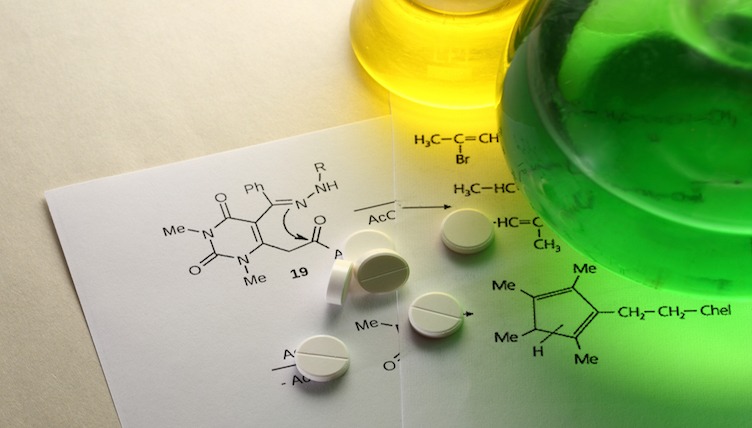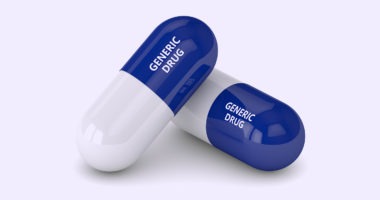New Drug Approvals: What’s Trending for Small-Molecule Drugs
How are small-molecule drugs faring in new drug approvals by FDA thus far in 2025? Where does the industry stand now and comparative to recent trends? DCAT Value Chain Insights looks at the products and companies.
By Patricia Van Arnum, Editorial Director, DCAT, pvanarnum@dcat.org
New drug approvals thus far in 2025
With staffing and budgetary cuts at the US Food and Drug Administration (FDA), an important question for the industry is have those cuts had an impact on drug approvals. Drug approvals do not follow a strict chronological path, so a comparison of the number of drug approvals at a given point in time has its limitations. That comparison, however, can serve as broad guidepost in measuring the level of innovation in the industry.
The verdict is that new drug approvals by FDA are down thus far in 2025 (as of October 15, 2025) compared to 2024 and 2023. For purposes of this analysis, the comparison was made based on new drug approvals from FDA’s Center for Drug Evaluation and Research (CDER), which reviews and approves new molecular entities and new biological therapeutics. Other biologic-based products, including blood products, vaccines, allergenics, tissues, and cellular and gene therapies, are reviewed and approved by a separate center within FDA, the Center for Biologics Evaluation and Research (CBER), and are not part of this analysis. Additionally, new drugs approvals were based on approvals through mid October in a given year.
Given that framework, the numbers show that through October 15, 2025, FDA’s CDER had approved 33 new molecular entities and biological therapeutics, compared to 37 approvals through October 18, 2024, which had 50 new drug approvals in the full-year 2024, and 43 new drug approvals through October 17, 2023, when 55 new drugs were approved in the full year 2023. In 2022, which was a recent low in new drug approvals with 37 new drug approvals for the full year, 26 new molecular entities and biological therapeutics were approved by FDA’s CDER through mid October 2022. In 2021, 41 new drugs had been approved by FDA’s CDER through mid-October 2021 en route to 50 new drug approvals in 2021.
Small molecules versus biologics
In terms of new drug approvals for new molecular entities and biological therapeutics, FDA’s CDER approves new drug application (NDAs), which include small-molecule drugs and other drugs that are chemically synthesized as well as biologics license applications (BLAs) for new biological therapeutics, such as recombinant proteins and monoclonal antibodies. Other biologic-based products, including blood products, vaccines, allergenics, tissues, and cellular and gene therapies, are reviewed and approved by FDA’s CBER and are not part of this analysis.
In terms of product mix, of the 33 new molecular entities and biological therapeutics approved by FDA’s CDER thus far in 2025 (as of mid October 2025), small molecules/other chemically synthesized drugs once again dominated approvals, consistent with recent trends. Small molecules/chemically synthesized drugs (i.e., drugs approved as NDAs) accounted for 25, or 76%, of new drug approvals by FDA’s CDER thus far in 2025, and biologics (which included two antibody drug conjugates) accounted for eight new approvals, or 24%, of new drug approvals by FDA’s CDER.
In looking at prior year trends, of the 50 new drug approvals by FDA’s CDER in 2024, 34, or 68%, were for NDA approvals (i.e., small molecules/other chemically synthesized products) (31 drugs and three diagnostic/imaging agents), and 16, or 32%, were biologics. That was on par with the mix in 2023, when FDA’s CDER approved 38 small-molecules/other chemically synthesized products, or 69% of new drug approvals and 17 new biological therapeutics, which represented 31% of new drug approvals. However, small-molecule drugs/other chemically synthesized product approvals in 2024 and 2023 dipped and were below recent historical levels when such drug approvals averaged 75% of new drug approvals between 2019 and 2021, with 2022 being an outlier with only 37 new drug approvals overall and only 59% being for NDA approvals.
Big Pharma versus mid-sized and small companies: NDA approvals by FDA’s CDER
Small-to-mid-sized companies have dominated NDA approvals thus far in 2025. Of the the 25 NDAs (i.e., small-molecules/other chemically synthesized drugs) approved by FDA’s CDER through mid-October 2025, small-to-mid-sized companies accounted for 16, or 64%, of NDA approvals, and the larger bio/pharmaceutical companies accounted for nine, or 36% of NDA approvals. Boehringer Ingelheim (BI), Novartis, and Sanofi each had two NDA approvals, and Eli Lilly and Company, GSK, and Merck KGaA each had one NDA approval.
BI received approval for Hernexeos (zongertinib) for treating certain forms of unresectable or metastatic non-squamous non-small cell lung cancer and for Jascayd (nerandomilast) for treating idiopathic pulmonary fibrosis.
Novartis received approval for Vanrafia (atrasentan) for reducing proteinuria (protein in the urine) in adults with primary immunoglobulin A nephropathy and for Rhapsido (remibrutinib) for treating chronic spontaneous urticaria (i.e., hives) in adults who remain symptomatic despite H1 antihistamine treatment.
Sanofi and Alnylam Pharmaceuticals received approval for Qfitlia (fitusiran), a RNAi therapeutic for treating hemophilia A and B, with or without inhibitors. It was developed as part of an RNAi therapeutics rare-disease alliance between Sanofi and Alnylam Pharmaceuticals. The small interfering RNA (siRNA) therapy works by inhibiting SerpinPC1 mRNA, reducing antithrombin levels, promoting thrombin generation, and helping to rebalance hemostasis to prevent bleeds and uses Alnylam’s ESC-GalNAc conjugate technology. Sanofi also received approval for Wayrilz (rilzabrutinib) for treating certain forms of persistent or chronic immune thrombocytopenia (low blood platelet counts).
Eli Lilly and Company, GSK, and Merck KGaA each had one NDA approval. Lilly received approval for Inluriyo (imlunestrant) for treating certain form of advanced or metastatic breast cancer. GSK received approval for Blujepa (gepotidacin), an oral antibiotic for treating uncomplicated urinary tract infections. Merck KGaA received approval for Gomella (mirdametinib) for treating adult and pediatric patients 2 years of age and older with neurofibromatosis Type 1, a genetic condition that causes changes in skin pigment and tumors on nerve tissue. Merck KGaA gained Gomella through its $3.4-billion acquisition, which was completed in July (July 2025) of SpringWorks Therapeutics, a Stamford, Connecticut-based commercial-stage bio/pharmaceutical company focused on certain rare diseases.
The 16 small-to-mid-sized companies with NDA approvals thus far in 2025 (as of mid-October 2025) were Alcon, Crinetics Pharmaceuticals, Dizal (Jiangsu) Pharmaceutical, Insmed, Ionis Pharmaceuticals, Jazz Pharmaceuticals, Kalvista Therapeutics, Lenz Therapeutics, Leo Pharma, Nuvation Bio, Medexus, Ono Pharmaceutical, PTC Therapeutics, Stealth Biotherapeutics, Verastem, and Vertex Pharmaceuticals.
The NDA approvals from these companies included: Alcon’s Tryptyr (acoltremon ophthalmic solution) for treating dry-eye disease; Crinetics Pharmaceuticals’ Palsonify (paltusotine) for treating in adults acromegaly (a condition characterized by overgrowth of bone and soft tissues); Dizal (Jiangsu) Pharmaceutical’s Zegfrovy (sunvozertinib) for treating certain forms of locally advanced or metastatic non-small cell lung cancer; Insmed’s Brinsupri (brensocatib) for treating non-cystic fibrosis bronchiectasis, a chronic lung condition; Ionis Pharmaceuticals’ Dawnzera (donidalorsen) for treating hereditary angioedema; and Jazz Pharmaceuticals’ Modeyso (dordaviprone) for treating diffuse midline glioma (a certain type of brain tumor).
Other NDA approvals from small to mid-sized companies thus far in 2025 included: Kalvista Therapeutics’ Ekterly (sebetralstat) for treating hereditary angioedema; Lenz Therapeutics’ Vizz (aceclidine ophthalmic solution) for treating presbyopia (gradual loss of the eyes’ ability to focus on nearby objects); Leo Pharma’s Anzupgo (delgocitinib) for treating moderate-to-severe chronic hand eczema; Nuvation Bio’s Ibtrozi (taletrectinib) for treating locally advanced or metastatic ROS1-positive non-small cell lung cancer; Medexus’ Grafapex (treosulfan), a reparative regimen for allogeneic hematopoietic stem cell transplantation for acute myeloid leukemia and myelodysplastic syndrome; Ono Pharmaceutical’s Romvimza (vimseltinib) for treating symptomatic tenosynovial giant cell tumor (a rare non-malignant tumor that forms within or near joints); PTC Therapeutics’ Sephience (sepiapterin) for treating hyperphenylalaninemia (a metabolic disorder characterized by elevated levels of phenylalanine in the blood); Stealth Biotherapeutics’ Forzinity (elamipretide) for treating Barth syndrome, a rare genetic disorder causing cardiovascular issues, muscle weakness, and an increased risk of infection; Verastem’s Avmapki Fakzynja Co-Pack (avutometinib and defactinib) for treating KRAS-mutated recurrent low-grade serous ovarian cancer; and Vertex Pharmaceuticals’ Journavx (suzetrigine) for treating moderate-to-severe acute pain.








